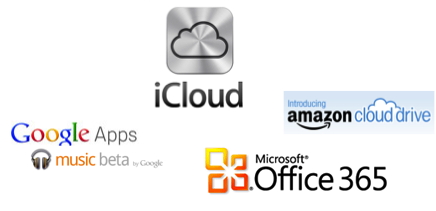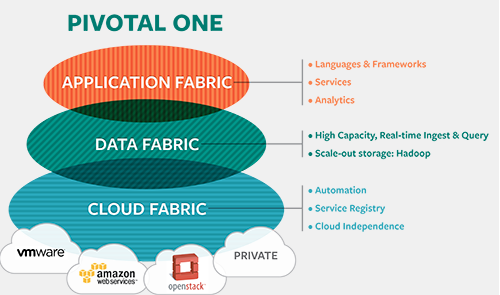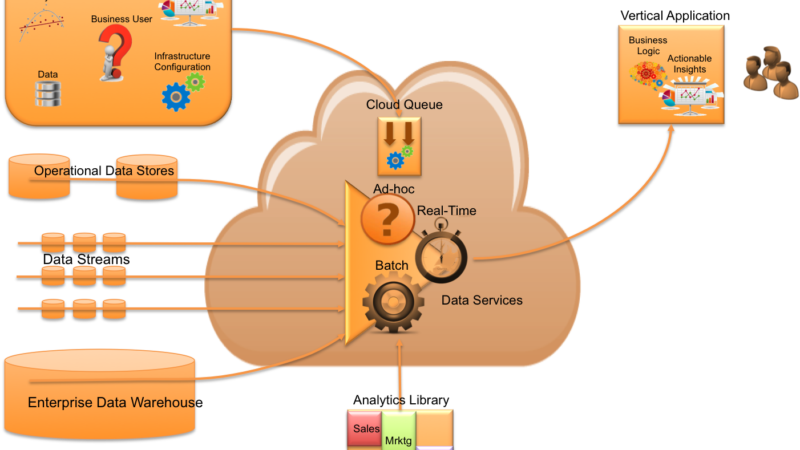What is Consumer Cloud?
 The recent offerings from Apple, Google, Amazon, and now Microsoft have definitely helped popularise the concept of the cloud, but do consumers really understand what it means? Does it really matter?
The recent offerings from Apple, Google, Amazon, and now Microsoft have definitely helped popularise the concept of the cloud, but do consumers really understand what it means? Does it really matter?
Only 40% of Americans understand cloud services such as Google Docs for documents, according to a report from market researcher Ipsos OTX MediaCT. Even fewer — 9% — actually use such services, according to the survey of 1,000 U.S. respondents.
I’ve watched the definition of “cloud” evolve quite a bit over the past two years. My first attempt to compile the many definitions was blogged here back in November of 2009. Lets take another snapshot, by visiting the Wikipedia definition:
Cloud computing is a model for enabling ubiquitous, convenient, on-demand network access to a shared pool of configurable computing resources (e.g., networks, servers, storage, applications, and services) that can be rapidly provisioned and released with minimal management effort or service provider interaction.
Then there’s the government’s definition of cloud computing from NIST, which you can download here. NIST describes a cloud service as requiring the following:
- On demand self-service that allows consumers to unilaterally provision computing capabilities without human interaction with the service provider,
- Broad network access, meaning that capabilities are available over a network and can be accessed by heterogeneous platforms, i.e., not just a dedicated thin client.
- Resource pooling such that different physical and virtual resources get dynamically assigned and reassigned according to consumer demand in a multi-tenant model.
- Rapid elasticity so that to the consumer, available capabilities often appear to be unlimited and can be purchased in any quantity at any time.
- Measured service allowing usage it be monitored, controlled and reported and automatically controlled and optimized.
The “Consumer Cloud” definition needs to be much more simple, of course. Otherwise, the target audience will not understand it (gets us back to the question, “Do they need to understand it?” Apple seems to think so).
Sure, people like me (or people probably reading this blog) will appreciate the finer details. However, the average consumer will only appreciate something like the following, which was mostly offered up by Scott Martin at the USA Today:
The cloud allows you to access storage or software remotely from a device via the Internet.
“Storage” is well understood by consumers and could be replaced with “All your digital content including documents, files, music, and videos”, and “software” could be replaced with “applications” to broaden it to services such as Facebook, Flickr and other online services.
Example Consumer Cloud Services
Ok. Lets now agree on a few of the more popular consumer cloud services….a few well-known as well as a few lesser known:
- Dropbox: a multi-platform, multi-system data sync software.
- Facebook: is clearly the largest social network web application / service with over 750M users.
- Twitter: providing the largest micro-blogging service for consumers (and businesses)
- SmugMug: one of the best apps you could choose for storing and sharing images, not to mention the abilities it gives users for customizing galleries and printing & framing options.
- Aviary: Fantastic online image editor
- Onlive: Attempting to revolutionize the way games are made available and against all odds, they’re doing a pretty dang amazing job of it.
- Hulu: arguably the best place to catch up on your favorite TV shows.
- Netflix: no argument as the best source for online movies and TV shows.
- Groupon: the leader in social shopping. you subscribe to daily deals (just notifications) and purchase deals you like along with your friends and family (though you can purchase them alone).
- Grooveshark: While Pandora is still one of the most popular music streaming web apps, it’s still only radio via the web and hasn’t changed all that much this year. Grooveshark, however, is a music library with access to music and “radio stations”, all for free (with an optional VIP paid subscription).
- Evernote: Evernote is similar to Dropbox in that it’s a powerful data sync tool compatible with nearly every platform; desktop, mobile and web. Evernote differs from Dropbox in the type of data typically stored, based on a note and notebook concept and built to help organize your notes and data (including images, files, etc).
- Sliderocket: SlideRocket is a presentation web app that really shows what kind of incredibly powerful apps can be developed for the web. Even current desktop powerpoint apps fail to offer the capabilities SlideRocket does.
- Penzu: the best online personal journal and online diary.
- Threadsy: a different approach to email and social media, bringing the two into a single app but in a way that makes it easier for you to organize and stay on top of everything.
- Yelp: has 41 million users as of December 2010, and offers reviews of everything from local eateries to maid services. It even has had its share of scandals.
- Office 365: Microsoft started selling Office 365, a cloud subscription version of Office that starts at $6 per user a month.
- Google Apps: Of course, Office 365 will compete directly with Google Apps and Docs, which Google sells to businesses for $50 per user per year.
- Amazon Cloud Drive: Amazon Cloud Drive is your personal hard drive in the cloud. Store your music, videos, photos, and documents on Amazon’s secure servers. All you need is a web browser to upload, download, and access your files from any computer.
- iCloud: Apple has combined the following services into one: a) iTunes in the cloud (music and video); b) Contacts, Calendar, Mail (MobileMe is no more a brand; c)Online Photos; d) Apps, Books, Documents; and e)Device backup
The Google or Apple Way?
When considering any of the cloud services above, one could segment the applications by area and make predictions on who’s going to dominate over the next 3 years.
To keep things simple, lets focus our attention (and provocative predictions) to Apple and Google (who will continue to add more and more applications to their cloud offerings/bundles).
The Apple iCloud and Google Cloud offerings are being deployed in two fundamentally different ways:
- Apple’s cloud is accessed via native applications, on proprietary devices (as someone recently said, Apple is in the device business…at the moment).
- Google’s cloud is web based, open standards (HTML5) and “commodity” hardware (they do not make money from selling devices, but rather web services).
Will these two players converge on a single cloud-based business model? I don’t know, but the current differences are notable, highlighting the strengths and DNA of each company.
Apple’s approach is founded on the idea that “we know what’s best for consumer” and, truthfully, it’s hard to argue with their results. Apple’s vision for the cloud is still about the total user experience, incorporating the various elements of the consumer’s lifestyle in cloud services – Mail, Calendar, Contacts, Backup, App Store, iBooks, Photo Stream, Documents, iTunes – all in the cloud. In Apple’s world, native iOS applications open the door to the cloud for the consumer.
Google, on the other hand, is all about the leveraging the open Web. Consistent with it’s motto to “do no evil”, Google plays well with others and promotes the use of open standards. Google’s vision for how the cloud is accessed is predominantly web based. It anticipates a new generation of HTML5 enabled web applications that behave and respond like native applications. Unlike Apple, Google’s view is that such applications should be accessible through non-proprietary devices.
Who wins? I think based on user experience alone, Apple wins (sorry Google, but you need to hire some user experience talent).
How much are consumers willing to pay?
Generally, not much. Would YOU pay a monthly fee to use Facebook, twitter, or any other social application? Maybe AFTER you’re well-rooted, but as a new user, no way. As consumers we’re used to the freemium model, where consumer-use is free and payment doesn’t come into play until we upgrade to a business use, or some level of “power user” (e.g. you can’t load terabytes of data into Dropbox for free).
For now, iCloud costs the user $25/year to essentially match your music to its catalog and sync it to all your iCloud-connected devices. Seems like a nominal expense along with the purchase of the music, and the cost of the music-playing devices.
I think we’ll generally see free consumer cloud services with paid upgrades to pro-user and commercial accounts.
Is consumer cloud killing or enabling the enterprise cloud?
“Consumeration of IT” is definitely a reality….meaning that enterprise employees will use consumer tools for business until IT realizes it’s time to upgrade to a corporate account (gaining access to security, monitoring, and control required by the enterprise).
For cloud service providers, getting people to use your cloud services as a consumer first, only helps you market to the enterprise. It’s a cost of sale. Just as Open Source can be perceived as a marketing strategy (allowing people within the enterprise to play with the product for free…even to the extent of modifying the code), freemium models fall into the same “try-before-you-buy” category.
Some consumer cloud services will NOT have an enterprise play, where advertising, merchandising services, and pro-user subscription services all come into play.
Bottom line, consumer cloud enables enterprise cloud.
Other Questions in Consumer Cloud
- What is the revenue opportunity presented by consumer use of cloud technologies (email, storage, VoIP, mobile apps, social networking and gaming, and music)?
- What are the geographic splits involved?
- How will new supply chains develop as a result of the rise of cloud computing?
- How fast will adoption and revenue growth really be, given drivers and inhibitors?
- Which consumer cloud business strategies will be successful in the next five years?
- How extensive is consumer usage of cloud-based applications?
Thoughts?



